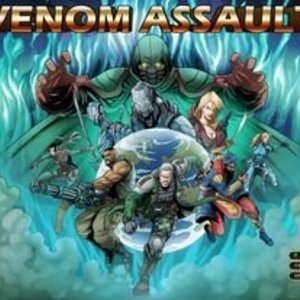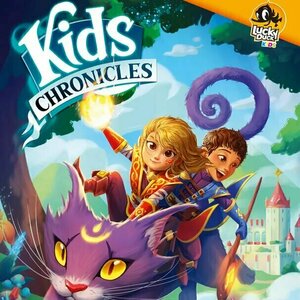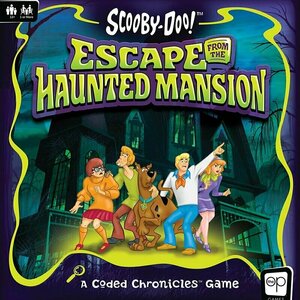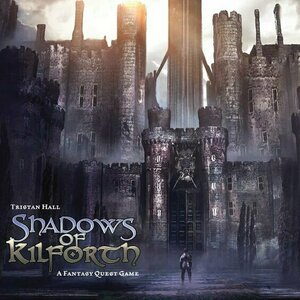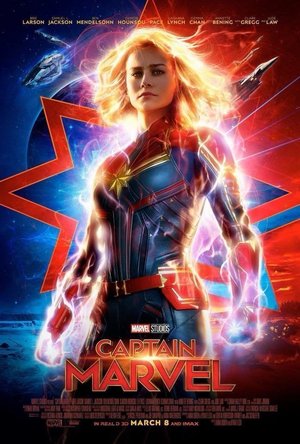
Video & TV Cast Pro for LG Smart TV: Stream Movies
Photo & Video and Entertainment
App
Watch any web-video, online movie, livestream or live tv show on your LG Smart TV or Blu-ray Player....
Purple Phoenix Games (2266 KP) rated VENOM Assault in Tabletop Games
Jan 25, 2021
VENOM Assault is a deck-building game very similar in style to Legendary: A Marvel Deck-Building Game (which, if I have to reference again will just call Legendary). Players take control of a team of (relative) wimps in order to help recruit the real elites and battle the evildoers plus their henchmen. Sound familiar? For this review I will be playing the Solo rules, which are the same as the multiplayer rules, but for one player. Novel, eh?
DISCLAIMER: We were provided a copy of this game for the purposes of this review. This is a retail copy of the game, so what you see in these photos is exactly what would be received in your box. I do not intend to cover every single rule included in the rulebook, but will describe the overall game flow and major rule set so that our readers may get a sense of how the game plays. For more in depth rules, you may purchase a copy online or from your FLGS. -T
To setup a game, please follow the rulebook as there is way too much to cover here in complete detail. The setup should look similar to the following photo. Here is what you will see: a space for the Mission scenario in the upper left corner. To its right a space for the active Event card. Next to that is the area for the VENOM Support cards to be displayed. Then the VENOM Support deck and discard areas. Below the Mission area is the space to track threat level and the current VENOM Leader’s Health and Defense values. Beneath those trackers is an area for four decks: the VENOM Leader deck, Reward deck, Event deck, and Event discard. To the right of this area is the Training Ground (recruitment zone), the Recruitment deck, and the Retirement pile. In the middle of the board are seven spaces to be populated with Reward cards and VENOM Leaders on top of the Rewards. Each player is dealt six Recruits and four Commandos and will shuffle these to create their draw deck. The players then draw five cards to create their hand and the game may now begin! Go save the world!
I will not be covering every aspect of a turn but will highlight the goings on. The Commander (first player) will draw and read the Event for the round. Events can be helpful for the players, extremely hurtful by advancing the VENOM plot, or even uneventful altogether. Next, player(s) will enter the Recruitment Phase. During this phase players will be using their entire hand to total the recruitment points that can be spent on recruiting those elite soldier, vehicle, and location cards from the Training Ground right into their discard piles.
Once the Recruitment Phase is complete, the Tactical Phase begins, and this is a large part of the game that helps differentiate it from others of its like. The players will choose one of the seven revealed VENOM Leaders on the map to attack in combat (if they choose – this is optional). Using the stats on the VENOM Leader card the players will adjust the Health and Defense values on the trackers on the board. If the VENOM Leader has any abilities that would trigger during this phase, then they trigger now. These could include Global Abilities as well. Once the Leader is done with their abilities, the players will choose one of their cards played to become the Combat Leader. This character now may not use their printed ability but will use their Combat Value (crossed pistols) to place combat dice on their card. The other team members in the combat will add dice to the pool as well if their abilities direct them. Next, the VENOM Leader will call forth their VENOM Support armies to aid them in the combat round. Once displayed, any hero Tactical Phase abilities can be resolved. If VENOM Support armies still are active, their abilities may be resolved at this point.
As the Tactical Phase ends, the Combat Phase begins. The Combat Phase is where the players are able to roll their combat dice in the hopes of besting the VENOM Leader’s Health and Defense values. Defense values dictate the dice values that need to be hit or exceeded to equal a successful attack. The Health value is how many successes are needed to defeat the Leader. However, once rolled the VENOM Leader will trigger any Combat Phase abilities at this time. Once complete the hero team will be able to resolve their own Combat Phase abilities, if any. Finally, the VENOM Support will resolve their Combat Phase abilities. Now the dice may be completely resolved against the Leader, after all abilities have been resolved. If the Freedom Squadron (heroes) defeated the Leader, they take the Leader and Reward cards into their VP pile. Depending on the Mission, these Rewards may be necessary to win the game, and all will have VP values.
After a lengthy Tactical and Combat Phase, the players then enter the Retirement Phase. The players may retire a card from their hand, thus removing the card from the game entirely.
Once a card has been retired (or not), the End of Turn Phase will help clean up the mess of the current round. Any other End of Turn Phase abilities will trigger, and used cards will be discarded to the appropriate areas and refills of key points on the board and players’ hands will setup the next round of play.
Once the Mission card’s success or failure stipulations have been met the game is over and, with any luck, the Freedom Squadron has defeated VENOM once and for all!
Components. This game boasts a large game board, a metric ton of cards, some dice, and some cardboard tokens. All the components are of fine quality and I have no issues with them. The art style used in the game is pleasing and, thankfully, not over-the-top gory or bloody or anything.
You may have noticed or thought that perhaps this game is taking inspiration from a cartoon/toy line from the ’80s, and I would very much agree with you. Could it be called Legendary: G.I. Joe? Maybe, but this one stands on its own, though very similar to the Legendary system. What I do like about VENOM Assault is the fact that it already comes with a large amount of incredible cards to be recruited. I do not know if I will ever feel the need for extra heroes in this game, whereas with the Marvel Legendary one can really go overboard trying to collect all the mini expansions and big box expansions just to find their favorite Marvel entities. Since VENOM Assault isn’t tied to any specific IP and is more generic overall, each character provided is its own thing, not a specific hero that one has grown up loving their entire life.
You see, the problem with those mini expansions in Legendary, at least for me, is that each one brings with it a host of heroes AND a host of new keywords and rules that must be remembered or referenced until it becomes second nature. In VENOM Assault, the rules stay the same and play is altered by the Missions and which characters can be recruited. I like a more reliable and static ruleset when I’m playing an intense game. So point goes to VENOM Assault here too.
Now, I was never into G.I. Joe and I am not at all a war or guns kinda guy, but I am really attracted to this game. I don’t necessarily think of my heroes as going in and shooting the place up, but rather taking Navy Seals-style tactical maneuvers to eliminate the target. So the point is that if you were never into that IP before, you should not feel alienated by this one. It appeals to all, in my opinion.
I said previously in this review that VENOM Assault is knocking on the door of bumping Legendary from my Top 10 games. I continue thinking about it even when I am not playing, and that is a mark of an excellent game for me. If I never think of a game again after playing, there is no way it remains in my collection. This one, however, has me considering different strategies in my head even now as I’m typing.
If you are in the market for a great deck-builder with worldwide espionage at its heart, I urge you to grab a copy of VENOM Assault. If you like the Legendary system but are looking for something just a little different, check this one out. If you just enjoy owning games that are fun and make you think, but also include a bit of luck in the dice rolls, then you owe it to yourself to play this. I really think you’ll enjoy it, as I have. Okay, time to setup another game.
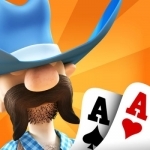
Governor of Poker 2 - Offline
Games and Entertainment
App
PLAY POKER, FREE SINGLE PLAYER HOLDEM POKER OFFLINE on your iOS device and beat every cowboy in...
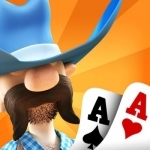
Governor of Poker 2 HD - Texas Holdem Poker without internet
Games and Entertainment
App
PLAY POKER, FREE SINGLE PLAYER HOLDEM POKER OFFLINE on your iOS device and beat every cowboy in...

Video & TV Cast for LG Smart TV: Stream Movies App
Photo & Video and Entertainment
App
Watch any web-video, online movie, livestream or live tv show on your LG Smart TV or Blu-ray Player....

Carcassonne
Entertainment and Games
App
a classic board game turned into an app. Tile laying game, where each turn you draw a tile and place...
BoardGameApp
Purple Phoenix Games (2266 KP) rated Kids Chronicles: Quest for the Moon Stones in Tabletop Games
Jan 13, 2022
In Kids Chronicles: Quest of the Moon Stones (which I will just call “this game” from here on out if you please), players are new apprentices to Merlin, the old wizard keeping two neighboring kingdoms together and keeping them from warring with each other. In this game, players will be adventuring across the double-sided board solving riddles, completing quests, and meeting tons of great characters all with the assistance and guidance of a free app specifically designed for this game.
DISCLAIMER: We were provided a copy of this game for the purposes of this review. This is a retail copy of the game, so what you see in these photos is exactly what would be received in your box. I do not intend to cover every single rule included in the rulebook, but will describe the overall game flow and major rule set so that our readers may get a sense of how the game plays. For more in depth rules, you may purchase a copy online or from your FLGS. -T
Setup could not be easier for this game. First, download the Kids Chronicles app to your phone or tablet, lay out the board (initially on the side that looks like Summer), display the Character cards and Item cards face-up in their respective decks. You don’t even have to sort or shuffle them! And you’re done. The game is ready to be played! Open the app and let it guide you through each mission – but do start with the tutorial, especially if any player hasn’t played a hybrid board game like this before.
I do not want to give away too much information in this review, so I will keep this portion brief. Throughout the game players will be marching around to different parts of the board, speaking with characters, collecting items, and solving riddles by scanning the QR codes found on the cards and board locations. I really should stop here so as not to spoil any actual gameplay information.
I have reviewed many of these hybrid app-driven games from Lucky Duck Games (Chronicles of Crime, CoC: 1400, CoC: 1900, and CoC: 2400). None of them, however, are designed for children, nor recommended for children to even play. With those titles, very adult themes are played through, but this is not so here with this game. Kids Chronicles is VERY family friendly, and the app simply walks players through the entire setup and missions.
What I enjoy most about this game, especially after having played their bigger siblings, is that there is no time limit to have things completed. So players can travel across the land, scanning whatever they like, and not be penalized for it. You just can’t do that with the grown-up versions. Also, the art is excellent and colorful – perfect for a kids game. The stunning visual appeal, free-feeling adventuring, and introducing the hybridization of apps and board games to children all work together really well here.
Now, the box advises that this game is for ages 7+ but my little 5-year-old loves this one and asks to play it all the time. There is a lot of reading to be done from the app (it doesn’t read anything aloud), but that just adds to the fun for us, because I enjoy adding different voices to the characters. So in a way, this is very similar to reading a nighttime book, but just way more fun.
So, if you have little gamers at home that are ready for that next step, I recommend checking out Kids Chronicles. I am super happy that Lucky Duck Games is branching out into the children’s games market, and bringing that excellent scanning mechanic along for the ride. Once you get the hang of this style of game, I suggest you also then pick up a copy of one of the Chronicles of Crime games for your adult game nights. You can thank me later!
Purple Phoenix Games (2266 KP) rated Scooby-Doo: Escape from the Haunted Mansion in Tabletop Games
Dec 1, 2020
Like I mentioned, Scooby-Doo: Escape from the Haunted Mansion is an escape room style board game with the tag of, “A Coded Chronicles Game.” This is a series of similar style games coming to us from the publisher using different IPs. This review will be lots different than our others because I do not wish to provide any spoilers, so I am eliminating my typical “messy components” shot at the end. I have also smudged the entire second photo so as not to give away anything. On to the review.
DISCLAIMER: We were provided a copy of this game for the purposes of this review. This is a retail copy of the game, so what you see in these photos is exactly what would be received in your box. I do not intend to cover every single rule included in the rulebook, but will describe the overall game flow and major rule set so that our readers may get a sense of how the game plays. For more in depth rules, you may purchase a copy online or from your FLGS. -T
To setup, read the rulebook, and turn to the proper paragraph number in the starting booklet. Each Mystery, Inc. character (“the gang”) has their own booklet with paragraphs and instructions inside. If you have ever played a game like Tales of the Arabian Nights you will know the style. The entry in the booklet will instruct players how to setup the first map tile and set the stage for the plot of the game.
This game features gameplay with no “turns,” so any person may choose to control a character from the gang and have them take some action. The possible actions that can be taken by the gang are: Velma may Research something, Shaggy can Eat stuff, Daphne Uses things, Scoob Smells, and Fred Investigates. Each character is assigned a single-digit number to be combined with items on the map tiles to arrive at a four-digit paragraph number. Find the number in the respective booklet and read aloud to the rest of the players. If successful, more map tiles may be added, or other things (being vague on purpose).
Should the entry not exist or instruct you to otherwise, players will need to “eat a Scooby Snack” by crossing off or reducing the total number of Snacks each time. We used another publisher’s pin to move along the track at the end of the rulebook because I didn’t feel like finding a coin.
As players progress through the game they will be presented with several challenges to figure out together. Half way through the game is a break time between Chapters 1 & 2. We were able to play this game over two nights utilizing the break.
At the end of Chapter 2 the game ends. If the players can successfully solve the case, they win! Alternately, if playing with academics, the rulebook provides a scale of VPs corresponding to the number of Scooby Snacks remaining. Whichever end-game method is chosen, the game is over and can be passed along to another household or gamer friend. That’s right, this is a one-shot escape room game. Only cheaters would go through it a second time…
Components. I cannot speak about many of the components, but I will evaluate what you see in the above photo. The rulebook and subsequent character booklets are all fine, but are curved as a result of how they sit in the box. The box itself is a strange design that you do not see with many board games. It’s not at all bad, just different. The cards are good, the map tiles are thin cardstock, and I can’t really discuss the Secret Envelopes. My biggest gripe about the game is the character standees. They are a long strip of thin stock that is folded in half, then the ends flared to make an inverted T shape. I mean, it’s fine, but this game could have done with a plastic stand for a sturdier standee to fit inside, or even basic miniatures. These standees that are included fall over all the time and when touched, even a little, flop on the table like a “professional” soccer player.
The gameplay, however, is very cool and I enjoyed my playthrough quite a bit. I very much enjoy one-shot games and despise when they ask you to destroy different components. No thanks, says me. Luckily, Scooby-Doo is able to be reset and given or sold to another person. I like that.
I also really enjoyed exploring the Haunted Mansion and trying to outwit the different challenges the game presented. This is not a particularly super difficult game to master, but will certainly give players a couple of fun hours of play with a group of animated childhood friends. For the nostalgia alone I would suggest this one, but there is also a pretty darn good game here. I have zero experience with the other Coded Chronicles Game from The Op (using The Shining), so I don’t know if I would enjoy it or not, but I loved Scooby-Doo and I adored my time with him. Purple Phoenix Games gives this one a meddling 12 / 18. If you are looking for a game you can circulate through your gamer friend network and enjoy the theme, then check out Scooby-Doo: Escape from the Haunted Mansion. It is cute, fun, and gives the ol’ noggin a workout. Also, privately message or email me and let me know if you figured out the correct ending. I did not.
Purple Phoenix Games (2266 KP) rated Shadows of Kilforth: A Fantasy Quest Game in Tabletop Games
Sep 3, 2020
Shadows of Kilforth is subtitled, “A Fantasy Quest Game.” Right there in the title you find out exactly what you are up against in the very foreboding but unassumingly-sized box. A game set in a fantasy world that is focused on questing. I have to admit up front that this review will be treated a little differently as the rulebook is hefty and nobody wants to read a thorough rules essay on Shadows. So I will give you a very high-level overview of the main steps and then give you my thoughts on how it all works together.
DISCLAIMER: We were provided a copy of this game for the purposes of this review. This is a retail copy of the game, so what you see in these photos is exactly what would be received in your box. I do not intend to cover every single rule included in the rulebook, but will describe the overall game flow and major rule set so that our readers may get a sense of how the game plays. For more in depth rules, you may purchase a copy online or from your FLGS. -T
Shadows of Kilforth is essentially a card and dice RPG-esque adventure game with an Asian-style theme but set in a fantasy world where locations will be devastated into gloom (building upon the first in the series Gloom of Kilforth). The players, as the heroes, have the daunting task of journeying throughout Kilforth’s 25 locations to collect items, allies, spells, and titles to overcome main quests and subquests before every location falls into gloom. These quests usually have the players gathering specific card types to satisfy and complete. Once main player storyline quests, called Sagas, are completed the hero levels up and when they complete their fourth quest in their main Saga they may attempt their Finale and then may finally assault the big boss, the Ancient.
Each turn players have Action Points (AP) to spend on doing different actions: movement, discovering rumours (yes, I know it’s the Queen’s English), confrontations, and regaling a Saga chapter, among several others. Some actions are free actions, called Deeds. These include resolving loot tokens, assaulting an ancient, exchanging items between players, and several others. By using combinations of Actions and Deeds players will be able to travel around collecting those items, allies, and so forth needed to complete their Saga chapters.
To complete objectives and quests, players will typically be rolling dice to meet requirements on the cards. This, as all role-players know, can be either supremely lucky or incredibly and predictably debilitating. Skill checks are abundant in Shadows and diversifying characters may or may not have advantages by being able to complete Fight, Study, Sneak, and Influence tests. Players will win if they can complete their Sagas and defeat the Ancient before all of the locations fall into gloom, signaling the end of the game.
All this, again, is very high-level and there are many intricacies in Shadows that I just cannot go over for the sake of time and the health of my typing fingers. But, the game can be played solo, cooperatively, or competitively. So depending on the mode of play and number of players Shadows can range from a 45 minute foray to multi-hour epics. This is why I have played this solo with one character for my plays.
Components. Shadows of Kilforth is very card-heavy, but also includes other goodies. The cards themselves are firstly quite numerous, but also good quality. I can see myself sleeving this and loving every minute of that process. Aside from the cards, the game includes standees for player pieces on the card map, wooden components to track HP, AP, Fate, Obstacles, Gold, Hidden characters, great swirly 6d6, and also cardboard chits for Loot tokens. I haven’t even mentioned the art yet and that may be the most stunning component in this game! I LOVE a game with great art, and Shadows has simply amazing art. This is not usually my style of game art either, but it is so pleasing and everything makes sense and gets me immersed in the game. Everything provided is wonderful quality and an absolute joy to use during play.
Ok so like always, we place our ratings graphic right at the top of our posts so our readers can see right away what we think of the game. As you can tell, I love Shadows of Kilforth. It has essences of so many games I enjoy pieced together in a very attractive and captivating package. The movement and subsequent destruction of map-cards are reminiscent of Forbidden Island/Desert and Tiny Epic Defenders, which I really love (don’t hate – it’s a good game). The gathering of select card types and returning to a location to complete feels like fetch quests in MMORPGs (Final Fantasy XI being my main squeeze for many years). Obviously dice skill checks and level ups from tabletop RPGs are in there as well.
Shadows is just such a great collection of mechanics that I love that I can see myself playing this game over and over and over. Caveat: I will never play this any way other than absolutely solo. My first play, yes a learning session, was just shy of two hours from setup to tear-down. Adding players will increase game length, and playing with AP-prone friends is a no-go for me on Shadows; I had to reference both the excellent provided cheat sheet and the rulebook throughout the play but I eventually got the hang of it and was able to fly through. I may play this solo but with multiple characters cooperatively someday, but I do not wish to play this with other people. Ever.
So here’s my final thought. Shadow of Kilforth is a beefy game, but is well worth the time and effort to learn and play a couple times before passing judgment. It has everything I love in a game and I can’t stop thinking about it. I want to play all the different Race/Class combinations and just dunk on all the Ancients. If only my dice didn’t hate me so much. I will certainly be keeping this one forever, and if you are a fan of fantasy themed adventure card games with heavy use of dice and cool components, DEFINITELY take a look at Shadows of Kilforth. As I am the only one who has played this, I speak for the team in saying Purple Phoenix Games gives this one a 6 / 6. Treat yoself to this one, folks.
Movie Metropolis (309 KP) rated Captain Marvel (2019) in Movies
Jun 10, 2019
Astounding really that a franchise started by all intents and purposes way back in 2008 with Iron Man and has grossed billion after billion at the box-office hasn’t felt the need to offer a big tentpole movie to a female hero. But history aside, Captain Marvel has finally landed. Are we looking at one of Marvel’s greats?
Captain Marvel (Brie Larson) is an extra-terrestrial Kree warrior who finds herself caught in the middle of an intergalactic battle between her people and the Skrulls. Living on Earth in 1995, she keeps having recurring memories of another life as U.S. Air Force pilot Carol Danvers. With help from Nick Fury (Samuel L Jackson), Captain Marvel tries to uncover the secrets of her past while harnessing her special superpowers to end the war with the evil Skrulls.
Directed by Anna Boden and Ryan Fleck in their first big-budget blockbuster, Captain Marvel shows, if you’ll pardon the pun, flecks of brilliance while battling a fairly average origins story for what could be described as Marvel’s most powerful hero.
Where it does shine throughout is in its casting. We’ll get to the titular hero shortly but Samuel L Jackson’s performance across the film is exceptional. Beautifully de-aged without the off-putting uncanny valley treatment we occasionally get with these types of visual effects, he’s a highlight of the film and the chemistry he shares with Larson is believable and enjoyable to watch.
Clearly not afraid of being typecast is Ben Mendelsohn who has played some tremendous villains over the course of his career. From Rogue One to Ready Player One, the Australian actor clearly feels right at home as Skrull leader, Talos.
Though hidden behind layers of prosthetics for the majority of the movie, he comes across much better than poor Oscar Issac did in X-Men: Apocalypse. Unfortunately, the film does lack a menacing villain throughout however, but this isn’t down to Mendelsohn’s performance which is spot on.
While the action is filmed with aplomb and there are some cracking set pieces, they feel a little ordinary and lacking in originality
Brie Larson is good, but her story arc is hampered by a bout of amnesia, used to progress the story. It’s a poor scripting decision by the film’s five writers but a necessary one to deal with all the Marvel lore and baggage that comes with creating the 21staddition to a very interlinked series. It’s a shame that this is the case as Larson shares wonderful chemistry with all her co-stars and is let down by her at-times clunky dialogue.
When it comes to the visual effects, we’ve got a story of two halves. This is a $152million movie and with that comes a set of expectations that just aren’t fulfilled consistently enough. Some of the CGI used is incredibly poor and the Kree’s home planet of Hala feels hollow – worlds away from Sakaar and Nova Prime from other Marvel outings. It could almost be compared to that of the Star Wars sequels, though perhaps that’s being a little too harsh.
The cinematography too is bland. Ben Davis is one of the finest cinematographers working in the industry and has put his name to films like Doctor Strange, Guardians of the Galaxy, Kick-Ass and Avengers: Age of Ultron to name but a few. But here, he seems to lack that flair he’s so often known for and while the action is filmed with aplomb and there are some cracking set pieces, they feel a little ordinary and lacking in originality.
Thankfully Captain Marvel retains that classic Marvel sense of humour that we all know and love and there are some genuinely touching moments as the titular hero begins to remember who she is. It also feels very much of the era it’s set in and that’s great. 90s music and a real 90s feel emanate from the screen and it’s here that the film scores highly.
Overall, Captain Marvel is a competent but not outstanding origins story that lacks consistent visual effects, a truly compelling script and engaging cinematography. While it is difficult to warm to Brie Larson’s Carol Danvers at times, it is testament to her acting ability that she remains likeable throughout – it’s just a shame that Marvel hasn’t quite managed to pull it off completely this time around.
https://moviemetropolis.net/2019/03/08/captain-marvel-review-marvel-just-about-manages-to-pull-it-off/
